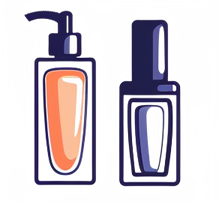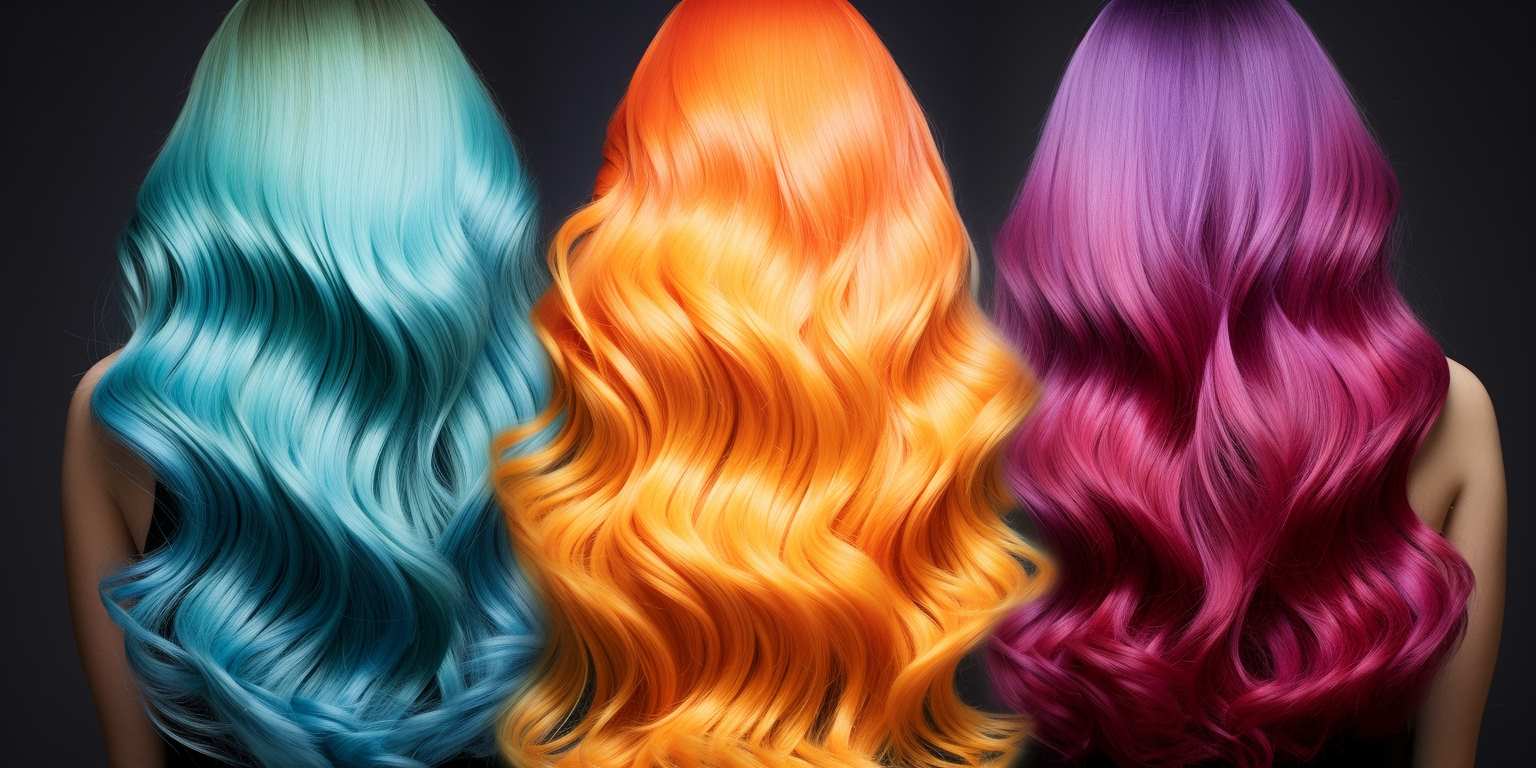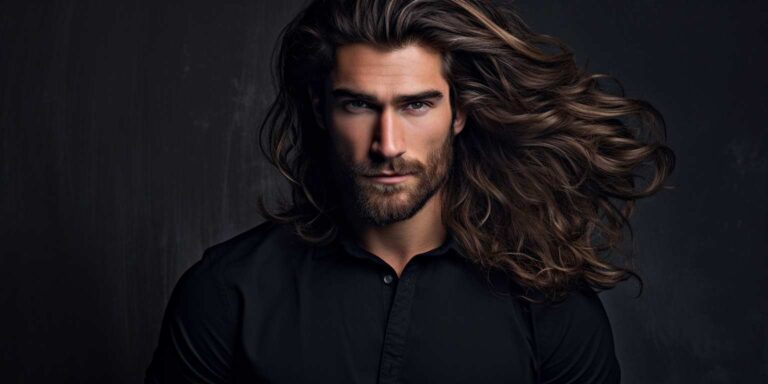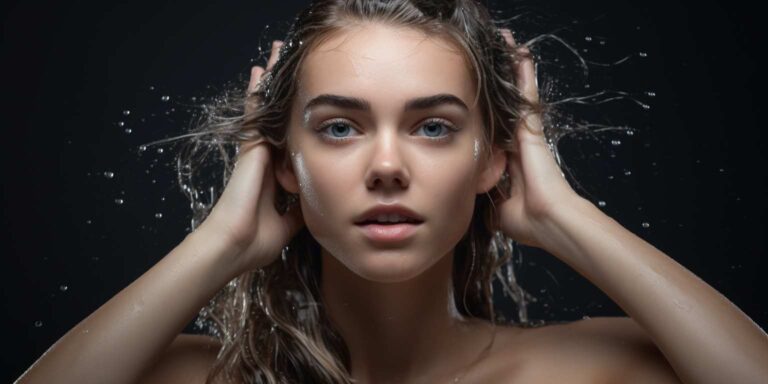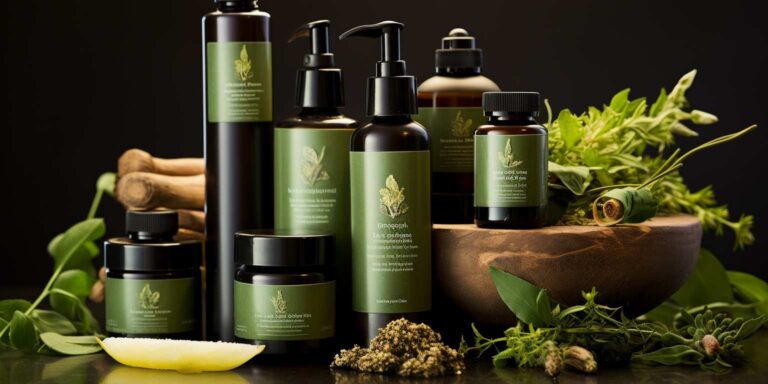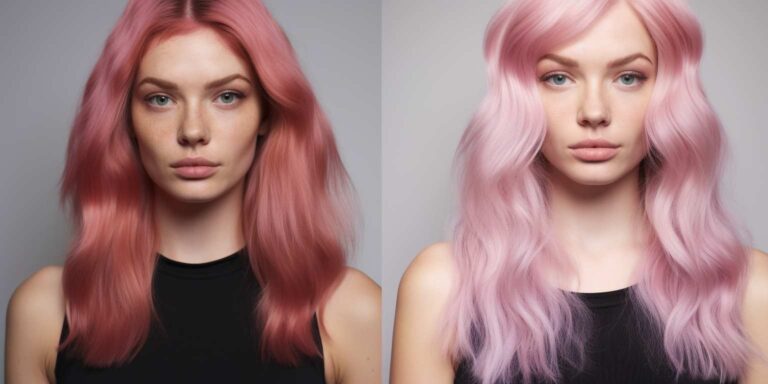Infuse my colour: how to enhance your hair hue naturally
Are you craving a vibrant hair hue without resorting to harsh chemicals? Look no further than Infuse My Colour, the ultimate solution for naturally enhancing your hair’s color. Whether you’re aiming to revitalize your current shade or experiment with something entirely new, this innovative product line offers a spectrum of possibilities.
Let’s delve into the magic of Infuse My Colour and discover how you can achieve stunning results without compromising the health of your locks.
The Science Behind Infuse My Colour:
| Key Ingredients | Benefits |
|---|---|
| Rice Protein | Strengthens hair strands, leaving them more resilient and less prone to breakage. |
| Avocado Oil | Nourishes and moisturizes the hair, enhancing shine and softness. |
| Pro-Vitamin B5 | Improves hair elasticity and adds volume, resulting in fuller-looking locks. |
How to Use Infuse My Colour:
- Start with clean, damp hair.
- Apply Infuse My Colour evenly throughout your hair, focusing on areas where you want to intensify the color.
- Leave the product on for 5-10 minutes to allow the pigments to penetrate the hair shaft.
- Rinse thoroughly with lukewarm water.
- Style as desired and revel in your vibrant, refreshed hair color.
Tips for Optimal Results:
- For a subtle tint, dilute Infuse My Colour with conditioner.
- To maintain your desired hue, use the product regularly as part of your hair care routine.
- Choose the shade that complements your natural hair color for the most seamless results.
Whether you’re a brunette longing for a rich chocolatey tone or a blonde seeking to banish brassiness, Infuse My Colour empowers you to transform your hair with confidence. Say goodbye to dullness and hello to luminous locks that reflect your unique style and personality.
Choosing the right colour infusion
When it comes to choosing the right colour infusion for your space, whether it’s a room in your home or the branding of your business, it’s essential to consider several factors to ensure you make the best decision. Colour has a profound impact on our emotions, mood, and even productivity, making it a crucial element in design.
One of the first considerations is psychology. Different colours evoke different emotions and can influence people in various ways. For instance, blue is often associated with calmness and trust, making it suitable for environments where you want to promote a sense of stability, such as offices or healthcare facilities. On the other hand, red can stimulate energy and excitement, making it a popular choice for restaurants or retail spaces.
Next, consider the purpose of the space or brand. What message do you want to convey? For a spa or wellness center, soothing colours like green or purple may be ideal to promote relaxation and tranquility. Meanwhile, a technology company might opt for sleek, modern colours like black or silver to convey innovation and sophistication.
It’s also crucial to think about colour harmony. This involves selecting colours that work well together to create a cohesive and visually pleasing aesthetic. One approach is to use the colour wheel to identify complementary or analogous colours that complement each other. For example, pairing orange with blue creates a vibrant and energetic contrast, while combining shades of green can evoke a sense of nature and harmony.
| Colour Scheme | Description |
|---|---|
| Monochromatic | Uses variations in lightness and saturation of a single colour. |
| Analogous | Uses colours that are adjacent to each other on the colour wheel. |
| Complementary | Uses colours that are opposite each other on the colour wheel. |
Consider the lighting in the space as well. Natural light can alter the appearance of colours throughout the day, so it’s essential to test samples under different lighting conditions to ensure they look as intended. Additionally, artificial lighting, such as warm or cool-toned bulbs, can affect how colours are perceived.
Maintaining vibrant coloured hair
Maintaining vibrant coloured hair
So, you’ve taken the plunge and dyed your hair that vibrant shade you’ve always dreamed of. Now comes the tricky part – maintaining that color’s vibrancy and keeping your locks looking fresh. Fear not, with the right care routine and a few expert tips, you can make sure your colored hair stays bold and beautiful.
1. Choose the right shampoo and conditioner: Opt for products specifically formulated for colored hair. Look for sulfate-free shampoos and conditioners as sulfates can strip away color. Products enriched with ingredients like argan oil, coconut oil, and keratin help nourish and protect colored strands.
2. Wash with cold water: Hot water opens up the hair cuticle, which can cause color to fade faster. Rinse your hair with cold water to seal the cuticle and lock in the color.
3. Limit washing: Washing your hair too frequently can strip away natural oils and color. Try to wash your hair every 2-3 days rather than daily.
4. UV protection: Sun exposure can cause color fading, especially for vibrant hues. Shield your hair from UV rays by wearing a hat or using products with UV protection.
5. Deep conditioning treatments: Treat your colored locks to regular deep conditioning treatments to keep them hydrated and prevent dryness and breakage. Look for masks and treatments specifically designed for colored hair.
6. Avoid heat styling: Heat styling tools like flat irons and curling irons can cause color to fade and damage hair. Opt for heat-free styling methods whenever possible, and use heat protectant products when heat styling is necessary.
7. Schedule regular touch-ups: To keep your color looking fresh, schedule regular touch-up appointments with your hairstylist. This will help prevent roots from showing and maintain the vibrancy of your color.
8. Protect hair during swimming: Chlorine and saltwater can be harsh on colored hair, leading to fading and dryness. Before swimming, wet your hair and apply a leave-in conditioner or oil to create a barrier against the elements.
Natural ingredients for colour enhancement
Natural ingredients have long been revered for their ability to enhance the color of various products, ranging from food to cosmetics. Harnessing the power of nature’s palette, color enhancement through natural ingredients offers a sustainable and eco-friendly alternative to synthetic additives.
Botanical Extracts: Botanical extracts serve as potent sources of natural pigments. Extracts from plants such as turmeric, beetroot, spinach, and saffron imbue vibrant hues to products while also offering antioxidant properties. These extracts are versatile and can be incorporated into a myriad of applications, including beverages, skincare formulations, and confectionery.
| Botanical Extract | Color Enhancement | Applications |
|---|---|---|
| Turmeric | Yellow to orange | Curries, sauces, skincare |
| Beetroot | Deep red to purple | Juices, lip balms, hair dyes |
| Spinach | Green | Smoothies, pasta, soaps |
| Saffron | Golden yellow | Rice dishes, teas, perfumes |
Fruit and Vegetable Juices: Juices extracted from fruits and vegetables like blueberries, carrots, and tomatoes offer a rich spectrum of colors. These natural juices not only enhance the visual appeal of products but also infuse them with vitamins and minerals. Blueberry juice, for instance, lends a deep blue-purple hue, ideal for beverages and desserts.
Mineral Pigments: Minerals such as iron oxides, titanium dioxide, and zinc oxide are naturally occurring compounds that contribute to color enhancement in various applications. Iron oxides, available in shades ranging from red to yellow, are commonly used in cosmetics, imparting color to lipsticks, eyeshadows, and foundations. Titanium dioxide, a white pigment, finds extensive use in sunscreen formulations for its ability to reflect and scatter UV rays.
- Iron Oxides: Red, yellow, brown pigments
- Titanium Dioxide: White pigment with UV-blocking properties
- Zinc Oxide: White pigment with soothing properties
Herbs and Spices: Herbs and spices not only add flavor but also contribute to color enhancement in culinary and cosmetic products. Paprika, for instance, imparts a warm red hue to dishes and lip balms, while spirulina offers a natural green tint suitable for health supplements and skincare formulations.
Colour infuse shampoo vs traditional dyes
Colour infuse shampoo vs traditional dyes
When it comes to revamping your hair color, two primary options stand out: Colour infuse shampoo and traditional dyes. Each method offers unique advantages and considerations, catering to different preferences and needs.
Colour infuse shampoo:
| Advantages | Considerations |
| 1. Convenient application without the need for mixing or lengthy processing time. | 1. Limited range of color options compared to traditional dyes. |
| 2. Gradual color enhancement with repeated use, allowing for subtle changes. | 2. May not be as effective for drastic color transformations. |
| 3. Infused with nourishing ingredients, promoting hair health alongside color enhancement. | 3. Color longevity may vary depending on hair type and frequency of washing. |
Traditional dyes:
| Advantages | Considerations |
| 1. Wide range of color options, including vibrant shades and highlights. | 1. Requires careful application to avoid skin staining and potential damage to hair. |
| 2. Immediate and noticeable color change, suitable for dramatic transformations. | 2. Often involves harsh chemicals that may cause hair dryness and damage over time. |
| 3. Long-lasting results, especially when paired with proper hair care routine. | 3. Time-consuming process, typically involving mixing, application, and waiting for color to develop. |
Tips for long-lasting colour vibrancy
When it comes to maintaining the long-lasting vibrancy of your hair color, a few strategic steps can make a significant difference. The journey to preserving your dazzling hues begins with gentle washing techniques. Harsh shampoos can strip away color molecules, leaving your locks dull and lifeless. Opt for sulfate-free formulas, which are color-safe and ensure a more prolonged color retention.
Protecting your hair from the sun’s potent rays is another crucial aspect. Sun exposure can cause color fading, especially in vibrant shades. Consider using UV protection sprays or wearing a stylish hat when spending extended periods outdoors. This simple step can go a long way in preserving the brilliance of your hair color.
Conditioning plays a vital role in maintaining color vibrancy. Invest in a quality conditioner specifically designed for color-treated hair. These products are formulated to nourish and hydrate your locks while preventing color from washing out. A weekly deep conditioning treatment can further enhance the longevity of your color.
Heat styling tools are both a blessing and a curse for colored hair. While they allow for versatile styling, excessive use can contribute to color fading. Whenever possible, embrace heat-free styling options or use heat tools on the lowest setting. This approach not only safeguards your color but also promotes overall hair health.
One often overlooked factor is the frequency of hair washing. Washing your hair daily may strip away natural oils that help protect the color. Consider spacing out your washes and incorporating dry shampoo on non-wash days to maintain a fresh look without compromising color vibrancy.
Choosing the right hair products is like curating a wardrobe for your strands. Opt for color-enhancing shampoos and conditioners that cater to your specific shade. These products typically contain color-depositing ingredients that revitalize and intensify your hair color with each use.
Lastly, water quality can significantly impact color retention. Hard water, which is high in mineral content, can contribute to color fading. Consider installing a water softener or using a clarifying shampoo to eliminate mineral buildup and preserve your hair color’s vibrancy.
The science behind colour infusion shampoos
The science behind colour infusion shampoos revolves around the principle of color theory and chemical interactions within the hair shaft.
Color theory dictates that certain pigments can cancel out or neutralize others. In the case of hair coloring, this theory is applied to counteract unwanted tones or enhance desired shades. For example, purple shampoos are often used to eliminate brassy tones in blonde or bleached hair.
Colour infusion shampoos contain color-depositing agents that adhere to the hair’s cuticle. These agents infuse the hair with pigments, altering its color temporarily.
The active ingredients in these shampoos vary depending on the desired effect. For instance, blue pigments are commonly used to counteract orange tones, while purple pigments combat yellow tones.
Chemical interactions occur between the pigments in the shampoo and the melanin in the hair. Melanin is responsible for giving hair its natural color, and its interaction with the color-depositing agents in the shampoo leads to the desired color correction or enhancement.
It’s important to note that colour infusion shampoos are not permanent hair dyes. Instead, they provide a temporary solution to refreshing hair color between salon visits or enhancing the vibrancy of dyed hair.
The effectiveness of colour infusion shampoos depends on various factors, including the porosity and condition of the hair, as well as the concentration and quality of the color-depositing agents in the shampoo.
For best results, it’s recommended to use colour infusion shampoos regularly as part of your hair care routine. However, overuse can lead to build-up of pigments and potentially cause discoloration or dryness.
